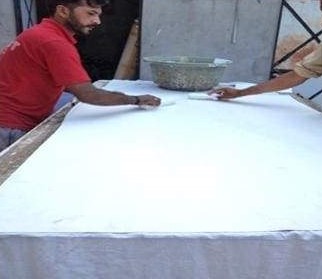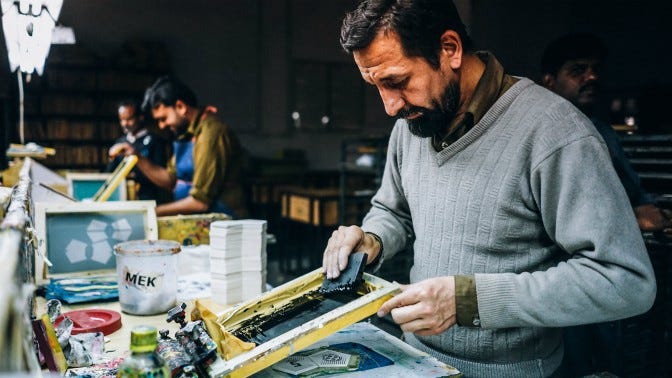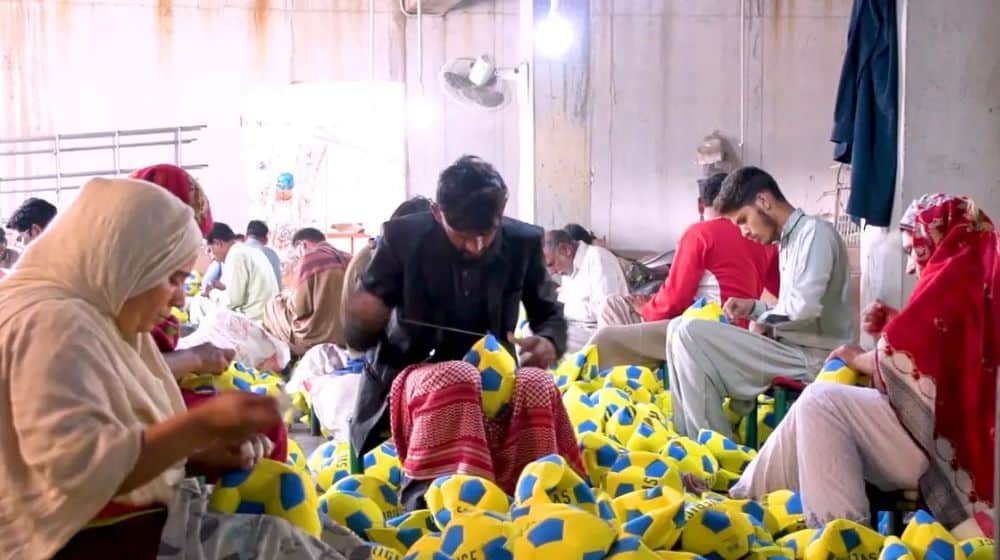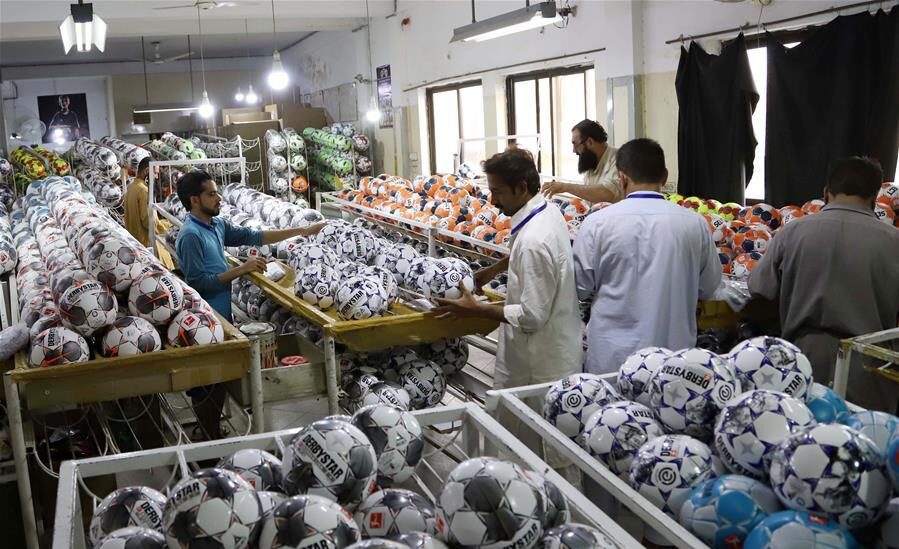How Football Are Made In Sportifia
Discover the heart of football craftsmanship in Sialkot, where 70% of the world’s footballs are born. At Sportifia, we proudly contribute to this legacy by offering top-notch services to meet all your footballing needs.
Customization is our forte. Whether it’s for club matches, promotions, school competitions, or sports shops, we tailor-make footballs to your exact specifications. From vibrant colors to sizes ranging from 1 to 5, we ensure every detail aligns with your vision.
Our prices? Unbeatable. Check out the pricing details below to see for yourself. But remember, we only accept orders for 25 balls or more for custom production. Need a sample before committing? Visit our eBay store to get a firsthand feel of our quality.
Got questions or concerns? Reach out to us anytime via Instagram, WhatsApp, or email. Your satisfaction is our priority, and we’re here to ensure every kick feels just right.
We also made:
MATCH BALLS – will, by and large, be constructed of a PU fabric. PU, though costly, provides the highest degree of playability and suits all day, all-weather performance. At We Print Balls we use specialist materials including Korean DuckSung, AI-2000 and Japanese Cordely to produce high-end match balls. Made from 4 Ply (4 layers of laminated cotton). We can build a ball to FIFA A Grade specification on request.
TRAINING BALLS – are built for consistency, durability and low maintenance. For this reason, you are going to regularly find the use of TPU and PVC. TPU is typically backed with soft foam, giving high-quality gentle touch properties, aiding player manipulation. PVC is harder to the touch but offers durability making it a greater option for the poorer quality pitches (notably sand and astroturf). Made from 4PLY or 3PLY (3 layers of laminated cotton) for children on request.
PROMOTIONAL BALLS – Designed for brand awareness, promotional events and occasions where cost is the overriding factor. They are made of PVC and 2 layers (2PLY) of laminated cotton. They are cheap and cheerful but offer limited durability.
Football Processing Details


Lamination Process
The first step in producing footballs involves the lamination of the rexine. Rexine is the outer cover of the ball - The part you see and fee. Rexine is basically a synthetic leather that can be made of various materials. Like anything in this word, you get what you pay for! Cheaper rexine is reserved for promotional balls and higher grades for training and match balls. Rexine is available in thousands of colours and can be PMS Panote colour shade matched as required by the colour scheme of the client and the branding. Usually, rexine is bought in rolls with each roll being around 25 to 30 meters in length and around a metre wide. The rexine roll is then cut into smaller square shapes. The reason being to make maximum use of the material when cutting hexagons and pentagons for size 5 soccer balls. Each piece of material sized 40 X 58 inches will produce enough hexagons and pentagons for around 7 footballs. Once the pieces are cut a layer of cloth is applied in the same shape as the cut rexine using latex glue. The rexine with cloth backing is then left to dry for few hours in natural sunlight for few hours. Luckily our balls are made in Pakistan where there is plenty of sunshine! The process is repeated a further three times by pasting glue on the fabric and applying another layer of polyester fabric. Match balls and training balls will have 4 layers but cheaper promotional balls will have 2 or 3 layers.

Cutting Panels
The hexagons and pentagons which you see on a traditional 32 panels soccer balls are cut by a specialist machine. Special dyes are installed in the machine to cut the panels in the correct shape. There are different dye sizes for size 4, 3, jumbo and mini soccer balls. The picture below shows how a dye looks like for cutting hexagons & pentagons. The small circle like spots on the dyes are used as marks for stitchers to sew the panels together. There are approximately 720 stitches made to complete one size 5 soccer ball.
Printing Process
Once all the hexagons and pentagons are cut we move on to print them. Customer design specifications along with logos & printing instructions dictate the printing requirements. The complete design of the ball is designed in vector-based design software like Corel or photoshop. Traditional silk screen printing processes are then used to expose the screens to sunlight to get an impression of the pattern. Once all the patterns are exposed then the screen is washed with water leaving the imprint of the pattern on the screen. These patterns will be later used to print the panels and design on the soccer balls using high-quality inks. Butyl proof ink is used in printing for its durability and clarity. The inks are produced to create an exact match of the PMS Pantone colours required in the design.


Thermal process
The next step is Thermal Bonding Technology. In our cutting-edge production facility, we employ thermal bonding technology to craft footballs with unparalleled precision and durability. This innovative process involves arranging all the panels inside a specialized mould, where adhesive is carefully applied to the edges of each panel. Once in place, the mould undergoes controlled heating and pressurization, seamlessly bonding the panels together into a seamless sphere. Unlike traditional stitching methods, thermal bonding significantly reduces labor requirements while ensuring a stronger, more uniform bond between panels. The result is footballs that exhibit exceptional performance and reliability, setting a new standard for quality in the world of sports equipment.
Stitching Process
In the process is to stitch the panels together and install the bladder. A complete visual of the ball is provided to the stitchers with all 32 panels. Like completing a jigsaw puzzle the stitchers will then assemble the balls by stitching the panels together. An official size 5 soccer ball has a total of 720 stitches using polyester threads. The bladder of the ball is glued to the air valve panel before stitching the balls together. This process alone takes a stitcher around 3 hours. Can you see why we can't deliver 100 balls to you in 3-4 days! Finally, your footballs are complete. They are inflated and left for 48 hours. This allows the air retention to be measured and to ensure the shape of the ball is as expected.


Ball Testing
At our Sport Good site, every football undergoes rigorous testing to ensure it meets our high standards of quality and performance. Our dedicated team of experts meticulously evaluates each ball for factors such as weight, size, inflation pressure, and bounce characteristics. Using state-of-the-art testing equipment and industry-standard protocols, we meticulously analyze every aspect of the football's construction to ensure optimal performance on the field. Only footballs that pass our stringent testing criteria are deemed fit for sale, ensuring that you receive a product that excels in both durability and playability. With our commitment to thorough ball testing, we guarantee that each football meets the highest standards of excellence, delivering an unparalleled experience for players of all levels.
Finally Packing & Delivery
We take great care in the packing and delivery of footballs to ensure they reach you in perfect condition. Each football undergoes a meticulous packing process, where it is carefully wrapped and secured to prevent any damage during transit. Whether you're ordering a single ball or a bulk shipment, our team ensures that each item is packaged with the utmost attention to detail. Once packed, we entrust your order to reputable shipping partners who specialize in handling sports equipment, guaranteeing safe and timely delivery to your doorstep. With our commitment to excellence in both packing and delivery, you can have peace of mind knowing that your footballs will arrive ready for action, wherever you are.
